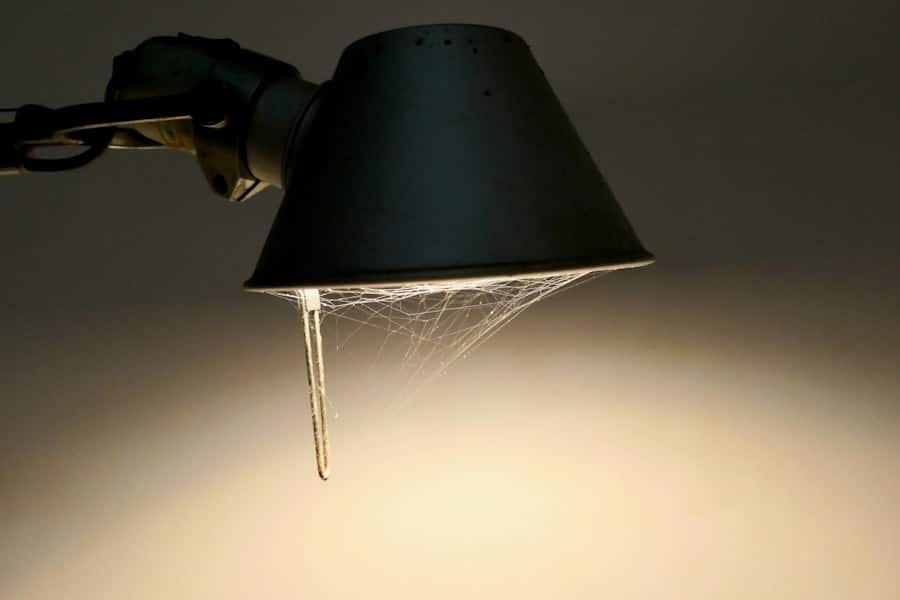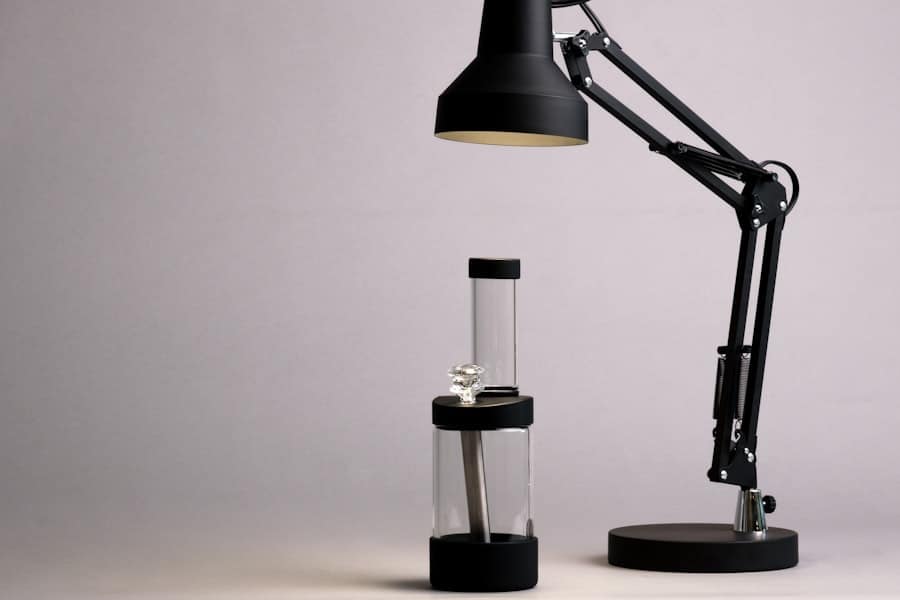In recent years, the advent of smart home technology has revolutionized the way we interact with our living spaces. Among the most popular innovations in this domain are voice-controlled smart lamps, which offer a seamless blend of convenience, energy efficiency, and modern aesthetics. These devices allow users to control lighting through simple voice commands, eliminating the need for traditional switches and remotes.
As part of the broader Internet of Things (IoT) ecosystem, smart lamps can be integrated with various home automation systems, enhancing the overall user experience. Voice-controlled smart lamps are not just about turning lights on and off; they can also adjust brightness levels, change colors, and even set schedules based on user preferences. This level of customization caters to a wide range of needs, from creating the perfect ambiance for a dinner party to ensuring that a child’s room is softly lit during bedtime.
The integration of artificial intelligence (AI) into these devices allows them to learn from user behavior, making them increasingly intuitive over time.
Key Takeaways
- Voice-controlled smart lamps offer convenience and hands-free control of lighting in your home.
- When choosing the right AI assistant for your smart lamp, consider compatibility with other smart devices and your personal preferences.
- Setting up the smart lamp involves plugging it in, downloading the corresponding app, and following the instructions for pairing it with your AI assistant.
- Connecting the smart lamp to Wi-Fi allows for remote control and access to additional features such as scheduling and integration with other smart home devices.
- Training the AI assistant involves teaching it specific voice commands for controlling the smart lamp, such as turning it on and off or adjusting the brightness.
Choosing the Right AI Assistant
Considering Ecosystem Compatibility
When choosing an AI assistant, consider factors such as compatibility with existing devices. If you already own other smart devices that are compatible with Amazon’s ecosystem, opting for Alexa may provide a more cohesive experience. Conversely, if you are deeply integrated into Apple’s ecosystem with devices like the iPhone or iPad, Siri might be the better choice.
Evaluating AI Assistant Capabilities
Each AI assistant has its unique capabilities. Google Assistant is known for its superior natural language processing capabilities, allowing for more conversational interactions. This can be particularly beneficial when issuing complex commands or when multiple tasks need to be executed simultaneously. On the other hand, Alexa boasts a vast library of third-party skills that can enhance the functionality of your smart lamp beyond basic lighting control.
Choosing the Right AI Assistant for Your Needs
Ultimately, the choice of AI assistant should align with your specific needs and preferences to ensure a smooth integration into your smart home setup.
Setting Up the Smart Lamp

Once you have selected your voice-controlled smart lamp and chosen an AI assistant, the next step is setting up the device. Most smart lamps come with a user-friendly installation guide that outlines the necessary steps for getting started. Typically, this process begins with unboxing the lamp and ensuring that all components are present.
After that, you will need to install any required mobile applications associated with your chosen AI assistant. For instance, if you are using Alexa, you will need to download the Amazon Alexa app on your smartphone or tablet. After installing the app, plug in your smart lamp and power it on.
The app will usually prompt you to add a new device; follow the on-screen instructions to initiate the pairing process. This often involves selecting your lamp from a list of available devices and confirming that it is ready to connect. Some models may require you to press a button on the lamp itself to enter pairing mode.
Once connected, you can customize settings such as naming your lamp and assigning it to specific rooms within your home for easier voice control later on.
Connecting the Smart Lamp to Wi-Fi
A crucial aspect of setting up a voice-controlled smart lamp is connecting it to your home Wi-Fi network. This step is essential for enabling remote access and ensuring that your AI assistant can communicate effectively with the lamp. Most smart lamps support 2.4 GHz Wi-Fi networks due to their extended range compared to 5 GHz networks.
Before proceeding with the connection process, ensure that you have your Wi-Fi credentials handy. To connect your smart lamp to Wi-Fi, open the mobile app associated with your AI assistant and navigate to the device settings. You will typically find an option labeled “Wi-Fi Setup” or “Network Settings.” Select this option and follow the prompts to choose your home network from a list of available connections.
Enter your Wi-Fi password when prompted and wait for the app to confirm that the connection has been established successfully. Once connected, your smart lamp will be able to receive commands from your AI assistant and can be controlled remotely through your smartphone or tablet.
Training the AI Assistant
Training your AI assistant is an essential step in optimizing its performance with your voice-controlled smart lamp. While these assistants come pre-programmed with a variety of commands, they can also learn from user interactions over time. This training process involves familiarizing yourself with how to issue commands effectively and providing feedback when necessary.
For instance, if you find that your assistant struggles to understand certain phrases or commands, you can adjust how you articulate them or use alternative wording. Additionally, many AI assistants allow users to create custom routines or shortcuts that streamline common tasks. For example, you could set up a routine called “Movie Night” that dims the lights and adjusts their color temperature to create a cozy atmosphere with a single command.
By regularly interacting with your AI assistant and refining these routines based on your preferences, you can enhance its ability to respond accurately and efficiently to your requests.
Voice Commands for the Smart Lamp

Understanding the range of voice commands available for your smart lamp is crucial for maximizing its functionality. Basic commands typically include phrases like “turn on,” “turn off,” “dim,” and “brighten.” However, many smart lamps also support more advanced commands that allow users to customize their lighting experience further. For instance, you might say “set the living room lamp to 50% brightness” or “change the bedroom lamp to blue.” These commands enable users to create specific moods or atmospheres tailored to different activities.
Moreover, some smart lamps offer features such as color-changing capabilities or preset lighting scenes that can be activated through voice commands. For example, you could say “activate reading mode” to switch on a warm white light at an optimal brightness level for reading without straining your eyes. Familiarizing yourself with these commands not only enhances convenience but also allows you to explore creative ways to utilize your smart lamp in various scenarios throughout your home.
Troubleshooting and Tips for Optimization
Despite their advanced technology, voice-controlled smart lamps may occasionally encounter issues that require troubleshooting. Common problems include connectivity issues, unresponsive commands, or difficulty in recognizing specific phrases. If you experience connectivity problems, ensure that both your smart lamp and AI assistant are connected to the same Wi-Fi network and that there are no obstructions interfering with their communication.
Restarting both devices can often resolve temporary glitches. To optimize performance further, consider placing your smart lamp in an area where it has a clear line of sight to your AI assistant’s microphone or speaker. This positioning can improve voice recognition accuracy and responsiveness.
Additionally, regularly updating both your smart lamp’s firmware and the mobile app associated with your AI assistant can help ensure that you benefit from the latest features and improvements.
Future Developments in Voice-Controlled Smart Lamps
The future of voice-controlled smart lamps is poised for exciting advancements as technology continues to evolve. One area of development is enhanced integration with other smart home devices, allowing for more complex automation scenarios. For instance, imagine a system where your smart lamp automatically adjusts based on external factors such as time of day or occupancy detected through motion sensors.
This level of integration could lead to significant energy savings while enhancing user comfort. Another promising avenue is the incorporation of machine learning algorithms that enable smart lamps to adapt more intelligently to user preferences over time. By analyzing patterns in usage data, these lamps could automatically adjust brightness levels or color temperatures based on individual habits or even mood detection through voice tone analysis.
As manufacturers continue to innovate in this space, we can expect voice-controlled smart lamps to become even more versatile and integral components of our connected homes in the years ahead.
If you are interested in creating a visually appealing smart lamp design, you may want to check out this article on the best free drawing software for digital artists in 2023. This software can help you sketch out your ideas and bring them to life before implementing them in your voice-controlled smart lamp project. Additionally, if you are looking to enhance the overall aesthetic of your living space, you may find this article on the best software for interior design in 2023 helpful. By utilizing these tools, you can ensure that your smart lamp seamlessly integrates into your home decor.
FAQs
What is AI?
AI, or artificial intelligence, refers to the simulation of human intelligence in machines that are programmed to think and act like humans. This includes tasks such as speech recognition, problem-solving, learning, and decision making.
What is a voice-controlled smart lamp?
A voice-controlled smart lamp is a lamp that can be controlled using voice commands. This means that you can turn the lamp on or off, adjust its brightness, or change its color using just your voice.
How can AI be used to build a voice-controlled smart lamp?
AI can be used to build a voice-controlled smart lamp by integrating speech recognition technology into the lamp. This allows the lamp to understand and respond to voice commands, making it possible to control the lamp using just your voice.
What are the benefits of using AI to build a voice-controlled smart lamp?
Using AI to build a voice-controlled smart lamp offers several benefits, including hands-free control, convenience, and accessibility for individuals with mobility or dexterity issues. It also allows for seamless integration with other smart home devices and systems.
What are some examples of AI-powered voice-controlled smart lamps?
Examples of AI-powered voice-controlled smart lamps include products like the Amazon Echo Plus, Google Home, and Philips Hue. These devices use AI and voice recognition technology to enable users to control their lighting with simple voice commands.

